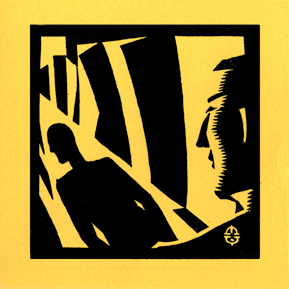Here are 10 things you should know about Colleen Moore, born 124 years ago today. She was a huge star in the silent era, but after just a few talkies, she opted to retire from the screen.
Tag: flappers
10 Things You Should Know About Anita Page
Here are 10 things you should know about Anita Page, born 112 years ago today. Her career all but ended when she was 23, but she was very popular indeed for a few memorable years.
10 Things You Should Know About Clara Bow
Here are 10 things you should know about Clara Bow, born 117 years (or so) ago today. Hers was a life of extreme high and lows, but in the 1920s, she was as big a star as there was.
365 Nights in Hollywood: Humor Risque, Pt. 3
HUMOR RISQUE
Just give it time
 In browsing the web the other day, we came across a piece of video we thought might be of interest.
In browsing the web the other day, we came across a piece of video we thought might be of interest.
It featured a cute 25-year-old woman offering her thoughts and opinions on a particular topic.
The identity of the young woman and the topic she was discussing aren’t really salient here, but suffice it to say that, aside from being cute, she didn’t really bring much to the table. Her insights on the topic she was discussing weren’t, in our view, terribly compelling and she came off as not a little callow.
Not that we intend to sound harsh. She was just an average person sounding off on a topic that interested her, and certainly no harm was done and not terribly much time was wasted on our part—we stopped the video and moved on about ninety seconds in. But there was little to recommend the video, in our opinion, even though it was a topic that was of interest to us and might, in fact, have been of interest to some visitors to this very site.
There are, of course, literally millions of such videos spread across the web—hundreds of thousands of them, surely, on YouTube alone—and few have much to really recommend them, but what the heck, they’re not hurting anyone. They’re out there for the viewing—you watch ’em, or you don’t, simple as that.
But it occurred to us that, as little value as that video held for us, give it sixty or seventy years, and someone much like us (we’re not kidding ourselves it’ll actually be us; we’re not likely to still be around then) will come across that video, or another one much like it, and be thrilled to be given a glimpse into what a twenty-something gal was like in the 2010s.
Imagine, for example, there had been something like the internet in the 1920s, and we still had access to videos created by young women of that time—girls next door and flappers, career gals and floozies. Who in the Cladrite community wouldn’t eagerly follow a link to access a trove of such videos, even if the content there was no more compelling on its own merits than the video we watched the other day of that 21st-century gal (or guy—gender’s not the point here) sounding off?
Yes, we have the movies of that era to inform us, but, as much we love moving pictures—and as much as we’ve learned from them about life as it was lived then—they never seem to offer an entirely true depiction of any era (pick a decade from your own life, and then consider the movies that came out during those years—do they really offer a fully accurate account of what it was like to live then?)
If the 1920s videos we’re imagining existed, we’d all be fascinated just to hear the slang used by the average Joes and Jills of the day, to see their mannerisms, their clothes, their hair. It wouldn’t much matter what they were discussing; we’d watch with great interest.
It’s interesting to consider the burnishing that occurs, the value that the passing years add to cultural artifacts, items that, in their own time, may not been held in great regard by anyone.
This effect holds true with moving pictures. We’ll happily watch the silliest 1930s picture, if for no other reason than to enjoy a cinematic glimpse at a bygone era, even though we avoid a distressingly high percentage of what Hollywood is currently cranking out.
Seventy years down the road, though, the fluff coming out of Hollywood today will have a whole new appeal to those with an interest in life as it was lived today, just as, say, Joe E. Brown pictures do now for those of us intrigued by the 1930s.

